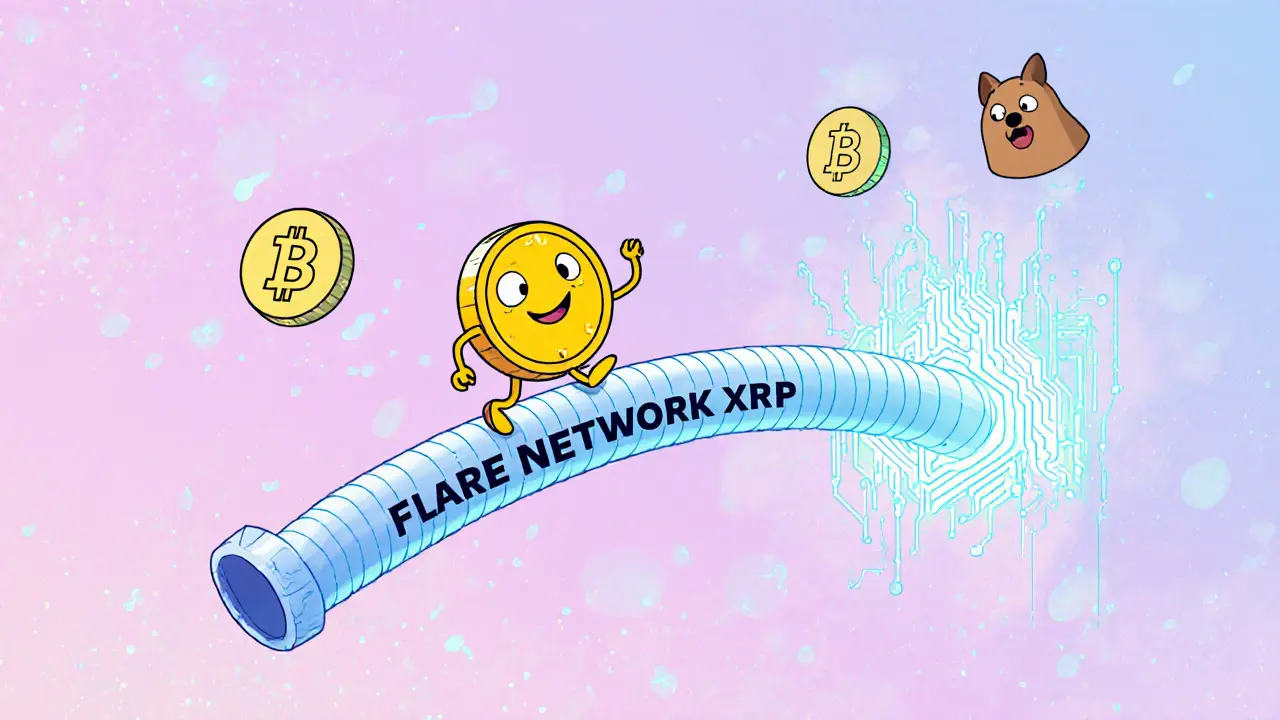Flare Blockchain: What It Is, How It Works, and Why It Matters
When you hear Flare blockchain, a decentralized network that brings smart contracts to Bitcoin and other non-smart-contract blockchains. Also known as Flare Network, it solves a big problem: most major blockchains can’t run complex apps like DeFi or NFT marketplaces on their own. Flare fixes that by acting as a bridge—letting assets from Bitcoin, XRP, and others interact with smart contracts without needing to move them.
Flare doesn’t just copy Ethereum. It uses a unique consensus system called Time-Locked Consensus, a secure, low-energy method that validates data from other blockchains using a distributed network of nodes. This lets Flare safely read prices, balances, and events from Bitcoin or XRP without trusting any single source. Then, it turns that data into usable information for smart contracts—like triggering a payment when Bitcoin hits a certain price. It’s not theory; real DeFi apps already use this to offer yield on Bitcoin-backed tokens.
Flare also supports State Connector, a tool that lets smart contracts pull live, verified data from outside the blockchain—like stock prices, weather, or sports results. This opens up use cases no other chain can easily handle: insurance that pays out when a flight is delayed, loans secured by Bitcoin, or prediction markets tied to real-world events. It’s why projects like Spark (FLR) and Flare’s native token are gaining traction—not because they’re hype, but because they solve real technical gaps.
What you won’t find on Flare? A lot of noise. Unlike chains flooded with meme coins and empty NFTs, Flare’s ecosystem is focused. Most projects here are about bringing real assets into DeFi, improving cross-chain liquidity, or building secure oracle systems. That’s why the posts below cover everything from how Flare compares to Chainlink to how to stake FLR safely—and why it’s one of the few blockchains actually making Bitcoin useful in Web3.
26 Aug
2025
Flare (FLR) is a blockchain that brings smart contracts to coins like XRP and Dogecoin. Learn how it works, what FLR is used for, its market status, and why Bitcoin integration in 2025 could change everything.
